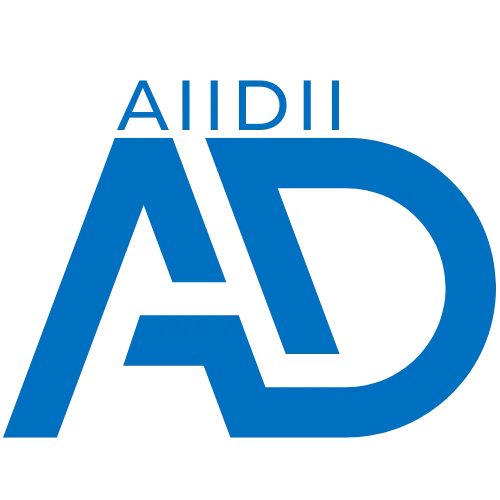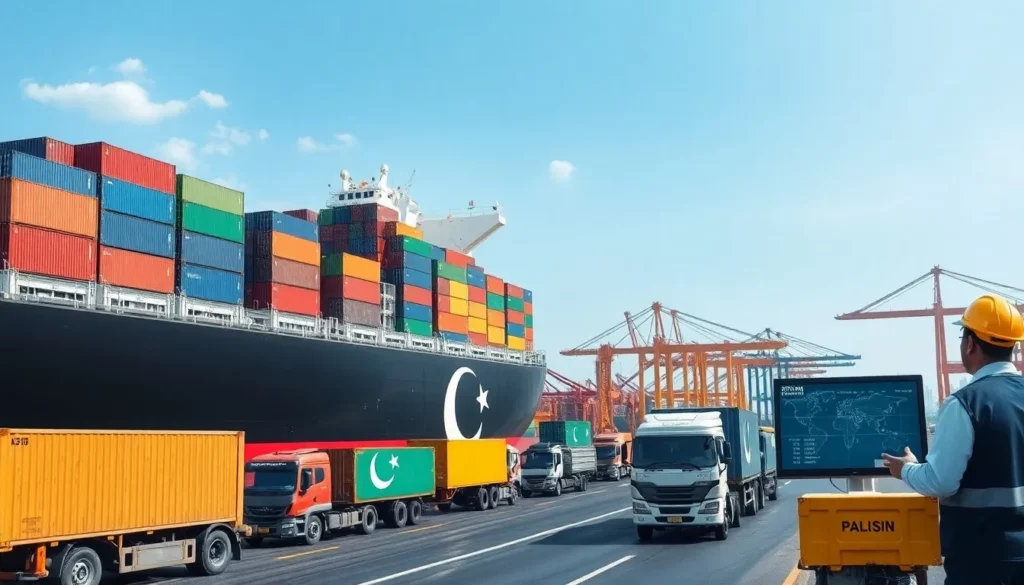As a B2B importer, you need a clear strategy to navigate the complexities of shipping from China to Pakistan. With two decades of experience in freight forwarding, I’ve seen how strategic logistics planning can transform your operations, optimize costs, and ensure compliance. This guide equips you with actionable insights to streamline your import process and boost profitability through expert planning and execution.
Best Practice: For cost efficiency, prioritize sea freight for bulk shipments, opt for DDP terms when simplifying logistics, register for WeBOC for seamless customs clearance, and leverage the China-Pakistan Free Trade Agreement (CPFTA) to reduce tariffs on eligible goods.
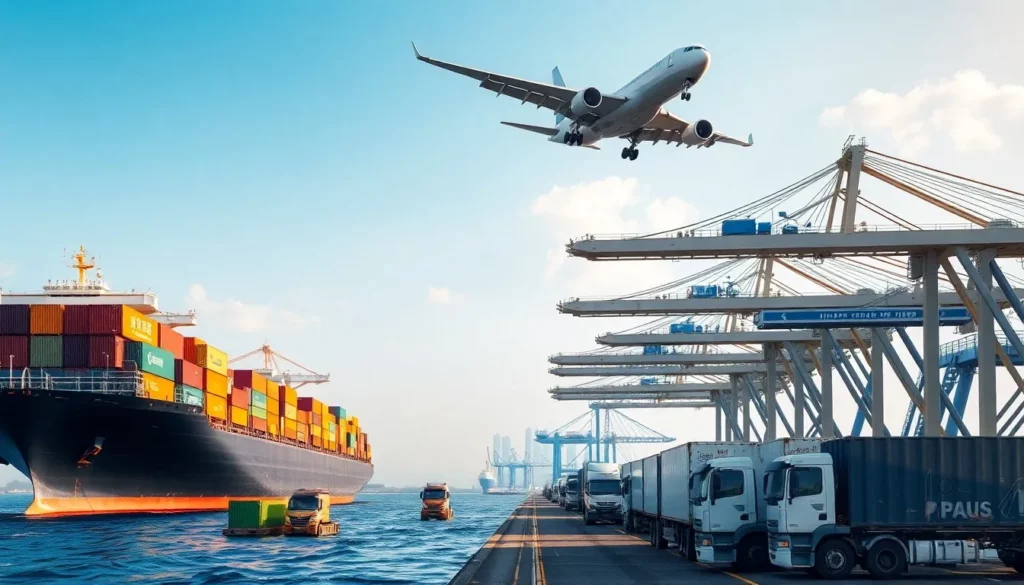
Shipping Methods and Transit Times
Sea Freight: Cost-Effective for Bulk Cargo
You’ll find sea freight the most economical choice for moving large, non-urgent shipments from China to Pakistan. It’s ideal for heavy or bulky cargo, allowing you to optimize logistics budgets while maintaining reliable supply chains. Major routes connect Chinese ports like Shanghai, Shenzhen, and Ningbo to Pakistani ports such as Karachi, Port Qasim, and Gwadar, ensuring year-round service reliability.
Pro Tips:
- Choose FCL for cargo exceeding 15-20 cubic meters to secure exclusive container use, minimizing damage risks and speeding up port handling.
- Opt for LCL for shipments under 15 cubic meters to share container space, offering flexibility for testing products or managing seasonal demand.
- Note: LCL involves longer transit due to consolidation and deconsolidation, so plan accordingly.
Key Metric: Expect 15-40 days for port-to-port transit, with direct routes to Karachi taking 20-25 days and secondary ports up to 30-40 days. Add 3-7 days for customs clearance, depending on documentation and cargo type.
Air Freight: Speed for High-Value Goods
For rapid delivery of high-value or time-sensitive goods, air freight is your go-to solution. It’s perfect for electronics, pharmaceuticals, or urgent restocks, offering speed, security, and reduced inventory costs. Airports like Jinnah International (Karachi), Allama Iqbal International (Lahore), and Benazir Bhutto International (Islamabad) handle cargo efficiently.
Example: Air freight suits electronics due to their high value-to-weight ratio, pharmaceuticals for cold chain needs, and fashion goods to meet market trends quickly.
Key Metric: Chargeable weight determines costs—use the higher of actual weight or volumetric weight (Length × Width × Height in cm ÷ 6,000 for standard air, ÷ 5,000 for express). For a 60cm × 40cm × 30cm shipment weighing 15kg, the volumetric weight is 12kg, so you pay based on 15kg.
Transit Time: Expect 3-10 days airport-to-airport, with express services at 2-3 days. Add 1-3 days for clearance and 1-2 days for delivery.

Overland Routes: CPEC Advantage
The China-Pakistan Economic Corridor (CPEC) offers rail and road options, balancing cost and speed. It’s ideal for shipments from western Chinese cities like Urumqi, Kashgar, or Chengdu, or for cargo like heavy machinery, textiles, or raw materials.
Pro Tips:
- Rail freight suits manufactured goods needing faster delivery than sea but lower costs than air.
- Road transport via the Karakoram Highway works for specific cargo types but varies with weather.
Key Metric: Overland transit takes 10-20 days, with rail at 12-15 days and road at 10-18 days, subject to border efficiency at Khunjerab Pass.
Total Landed Cost Breakdown
Understanding Freight Quotes
Accurate freight quotes are critical for budgeting. A professional forwarder provides a clear breakdown of base rates and surcharges, ensuring transparency for cost planning.
| Cost Component | Sea Freight | Air Freight | Rail Freight |
|---|---|---|---|
| Base Rate | $1,050-$3,050 per container (FCL); $50-$100 per cubic meter (LCL) | $3-$10 per kg | $1,500-$2,500 per TEU |
| Surcharges | BAF (10-15%), PSS ($200-$500), THC ($100-$300) | Fuel surcharges vary | Minimal surcharges |
Pro Tips:
- Compare quotes based on total landed cost, not just base rates.
- Budget for BAF (fuel adjustments), PSS (peak season charges, October-February), and THC (port handling).
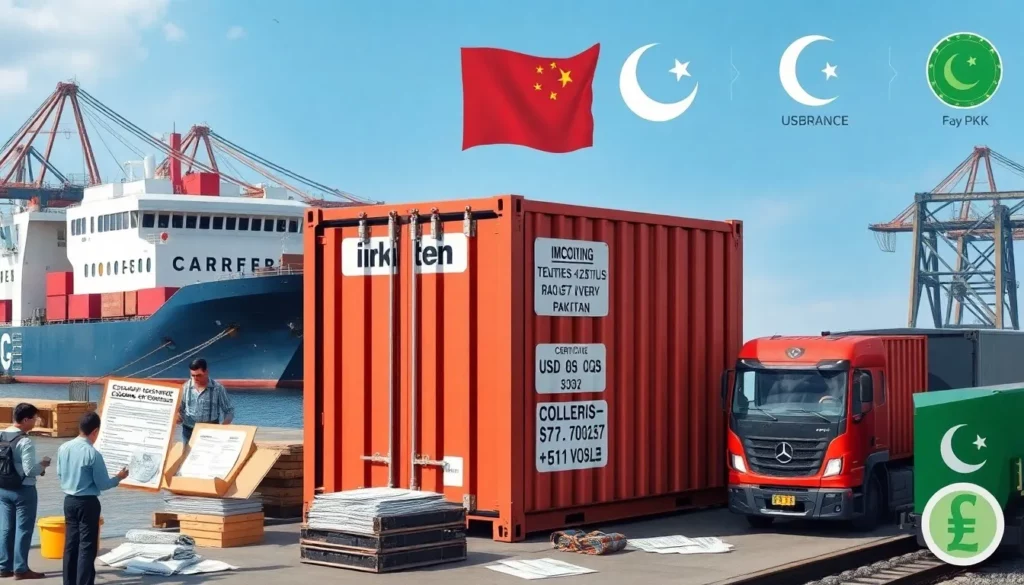
Import Duties and Taxes
Pakistan’s import duties hinge on accurate HS code classification and CIF value calculation. The CPFTA offers tariff reductions, with 75% of product lines eventually zero-rated.
| Category | Duty Range | CPFTA Benefit |
|---|---|---|
| Electronics | 3-20% | Zero-tariff for qualifying items |
| Textiles | 10-20% | Partial 20% reduction on 5% of lines |
| Machinery | 7.5-10% | Preferential rates for inputs |
Example: For goods costing $10,000, with $200 insurance and $800 freight, the CIF value is $11,000, used for duty calculations.
Best Practice: Engage a customs broker to verify HS codes and secure CPFTA benefits with a valid Certificate of Origin.
Ancillary and Hidden Costs
Ancillary charges can add 15-25% to freight costs. Budget for:
- Port Handling: $100-$300 per shipment.
- Customs Brokerage: $150-$500 based on complexity.
- Inland Transport: $0.75-$1.50 per kilometer by road; rail for longer distances.
- Cargo Insurance: 0.2-0.5% of cargo value (All Risk for high-value goods, Named Perils for bulk).
- Currency Fluctuations: Use forward contracts to hedge USD/CNY/PKR risks.
- Bank Fees: 0.5-2% of transaction value.
Critical Warning: Overlooking ancillary costs can erode profitability. Request detailed cost breakdowns from your forwarder.
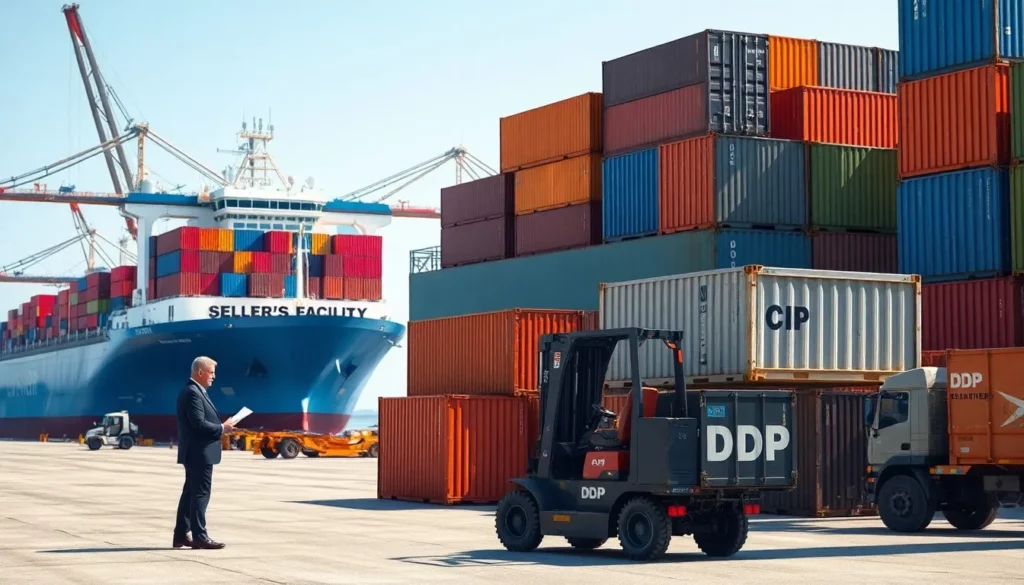
Incoterms: Costs and Responsibilities
Impact of Incoterm Choice
Your Incoterm choice shapes costs, risks, and responsibilities. FOB offers cost control, while DDP simplifies logistics but may inflate prices.
| Incoterm | Seller Responsibility | Buyer Responsibility | Risk Transfer Point |
|---|---|---|---|
| EXW | Minimal (factory delivery) | All logistics, customs | Seller’s facility |
| FOB | Export clearance, port delivery | Main carriage, import | Ship’s rail at origin |
| CIF | Transport, minimal insurance | Import clearance, delivery | Destination port |
| DDP | All logistics, customs, delivery | None | Buyer’s facility |
Best Practice: Choose FOB for balanced control and transparency, ideal for most B2B importers.
Comparing Common Incoterms
- EXW: Maximum control, but requires robust logistics expertise.
- FOB: Seller handles export; you control freight and import, ensuring cost transparency.
- CIF: Seller arranges transport, but insurance may be inadequate, and costs can rise.
- DDP: Simplifies operations but obscures costs due to seller markups.
Critical Warning: CIF and DDP may lead to hidden costs. Verify insurance coverage and freight terms.
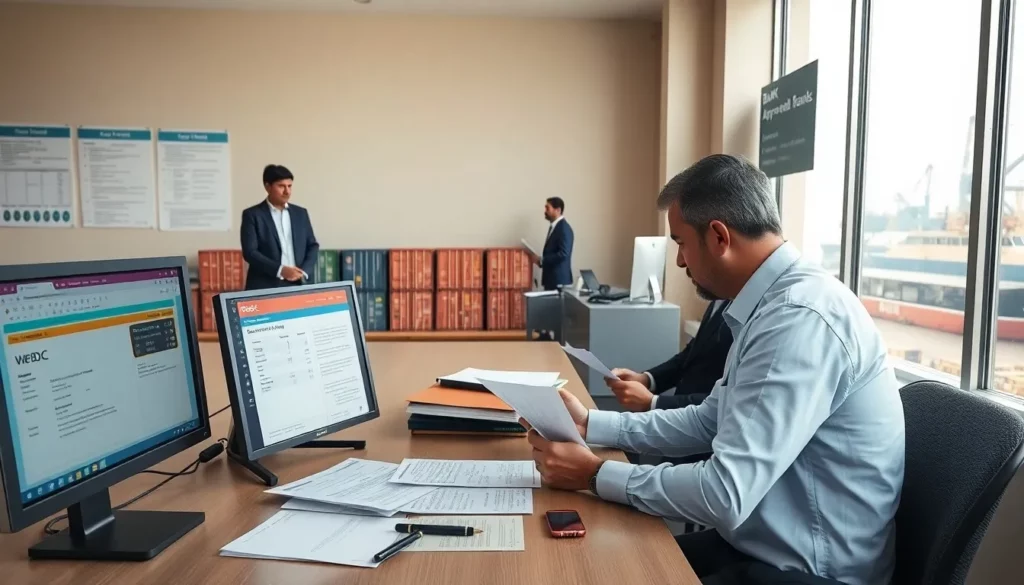
Pakistan’s Customs and Documentation
Customs Clearance Process
Pakistan’s WeBOC system is mandatory for customs. Register with business documents, NTN, and bank details. File a Goods Declaration (GD) with cargo details and duties.
Pro Tips:
- Pre-submit documents to avoid delays.
- Use a customs broker for accurate HS code classification.
- Pay duties via approved banks for swift cargo release.
Key Metric: Clearance takes 3-7 days, depending on documentation and cargo risk level.
Essential Documentation
Ensure compliance with:
- Commercial Invoice: Detailed product specs, values, and terms.
- Packing List: Package counts, weights, and dimensions.
- Certificate of Origin: For CPFTA tariff benefits.
- Bill of Lading (B/L) or Air Waybill (AWB): B/L for sea freight, AWB for air.
- NTN and Payment Proof: Mandatory for all imports.
Critical Warning: Missing documents can lead to cargo holds, delaying your supply chain.
Regulatory Compliance
- Electronics: Require PTA approval for telecom devices.
- PSQCA: Certification for specific goods.
- Post-Clearance Audits: Retain records for 5-7 years to comply with FBR audits.
Best Practice: Use professional services for compliance and record management.
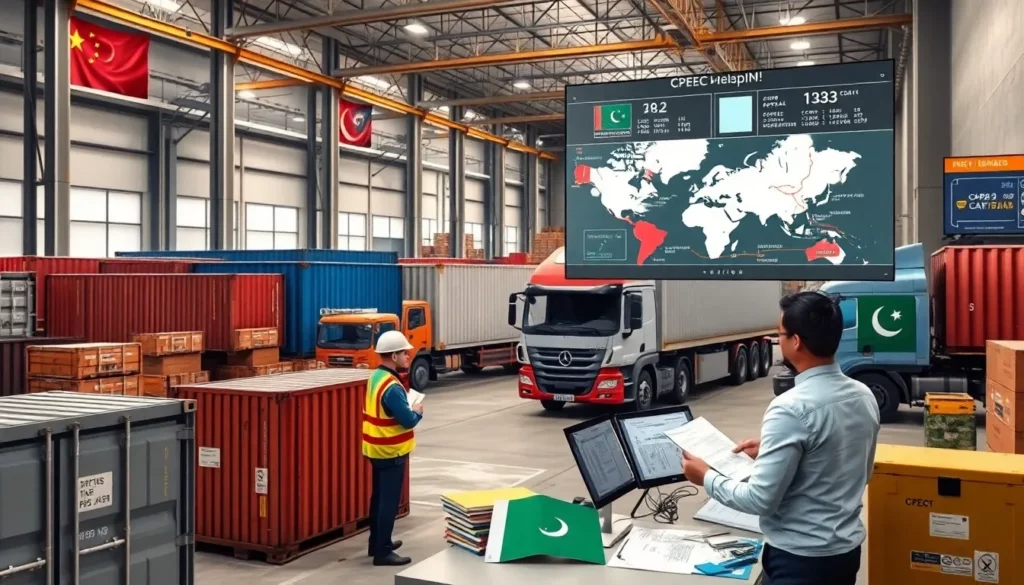
Selecting a Freight Forwarder
Core Capabilities
Your forwarder must offer:
- Door-to-Door Logistics: Pickup, clearance, and delivery.
- Customs Expertise: Knowledge of WeBOC and CPFTA.
- CPEC Knowledge: For rail and road options.
- Technology: Real-time tracking and reporting.
Pro Tips: Verify IATA or FIATA certifications and request client testimonials.
Choosing a Partner
- Compare Quotes: Focus on total landed costs, not just base rates.
- Assess Communication: Prioritize responsiveness and problem-solving.
- Check Expertise: Ensure China-Pakistan trade lane experience.
Example: A forwarder with CPEC expertise can optimize rail routes from western China.
Strategic Import Roadmap
Phase 1: Strategy and Partner Selection
- Register with SECP, FBR, NTN: For legal imports.
- Select Forwarder: Prioritize China-Pakistan expertise.
- Model Landed Costs: Include all expenses and contingencies.
- Choose Incoterm: FOB for control, DDP for simplicity.
Phase 2: Logistics Planning
- Analyze Cargo: Volume, weight, value guide mode choice.
- Compare Modes: Sea (15-40 days), air (3-10 days), rail (10-20 days).
- Plan Timeline: Factor in production, transit, and clearance.
Phase 3: Pre-Shipment Execution
- Prepare Documents: Invoice, packing list, certificate of origin.
- Coordinate Pickup: Ensure proper loading and export compliance.
- Secure Insurance: Match coverage to cargo value and risk.
Phase 4: Customs and Delivery
- File GD via WeBOC: Use a broker for accuracy.
- Manage Clearance: Pay duties promptly for release.
- Plan Inland Transport: Road or rail to your facility.

Conclusion
Importing from China to Pakistan demands strategic planning across shipping, costs, and compliance. In my 20 years in freight forwarding, I’ve seen how informed decisions on modes, Incoterms, and customs drive success. Partner with an experienced forwarder like AIIDII to navigate complexities, reduce costs, and strengthen your supply chain for long-term growth in Pakistan.
FAQs
1. What are the key differences in liability and cost between FOB and CIF Incoterms?
With FOB, you assume liability once goods cross the ship’s rail at the Chinese port, controlling freight, insurance, and import costs for transparency. CIF shifts liability to the seller until the Pakistani port, but their insurance may be minimal, and markups can inflate costs, reducing your control.
2. How does the CPFTA impact my customs duties?
The CPFTA Phase-II offers zero-tariff treatment for 35% of product lines, with 75% eventually covered, and 20% partial reductions on 5% of lines. Qualifying machinery, raw materials, and inputs lower costs if you provide a valid Certificate of Origin.
3. What is WeBOC, and is it mandatory for importers?
WeBOC is Pakistan’s mandatory electronic customs system. You must register with business documents and NTN to file Goods Declarations, enabling efficient import processing.
4. Why do shipments get delayed at Pakistani ports, and how can I prevent it?
Delays stem from incomplete documents, incorrect HS codes, or missing permits. Prevent them by pre-submitting documents, engaging a customs broker, and verifying compliance.
5. How do I calculate chargeable weight for air freight?
Compare actual weight to volumetric weight (Length × Width × Height in cm ÷ 6,000 for standard, ÷ 5,000 for express). For a 60cm × 40cm × 30cm, 15kg shipment, pay based on 15kg (actual) as it exceeds 12kg (volumetric).
